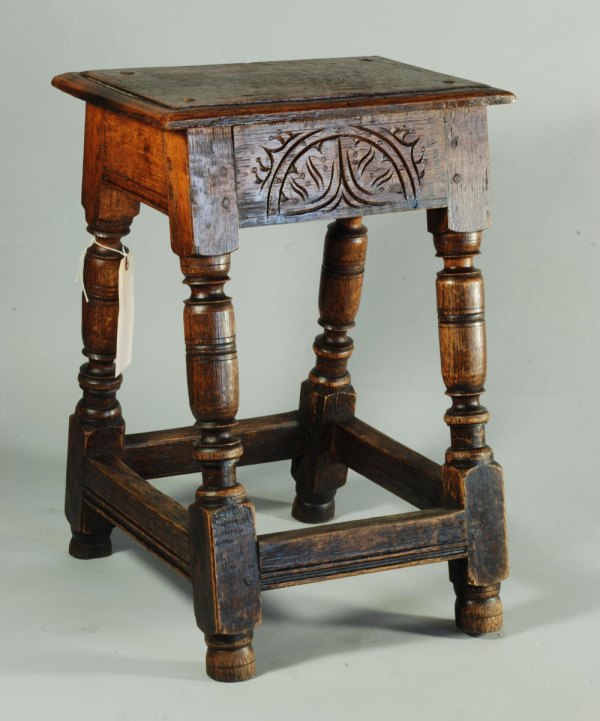
Question from a reader: “I have seen websites like Mr. Follansbee’s with instructions on making these [joint stools] using absolute period techniques and tools or offers to buy one. I’ve seen stools that look (in pictures) to be authentic but which are noted as being early 20th century. So – once it had acquired an old patina – how would you know how old it really was if someone used authentic tools and techniques? Could you tell from the oak itself? Just curious.”
Peter Follansbee, one of the authors of “Make a Joint Stool from a Tree” responds:
Hmmm. This is the stuff of legends. I remember reading about the Armand Lamontagne “Brewster” chair before I had ever made a chair myself.
Many years later I learned a lot about museum pieces, antiques, early reproductions and various other permutations of historic furniture (restorations, repairs, “marriages” etc). To be really comfortable making judgment calls takes a lot of exposure to period pieces – not just photographs, but hands-on time with numerous pieces. Even then, there are times when someone shows me a piece of joined furniture reportedly of the 17th century, and I am left with nothing to say. Sometimes, it just “feels wrong.”
As far as the stuff I make, how can one tell after years of use that it’s late 20th/early 21st-century work and not a 17th-century piece? I believe that dendrochronology (tree-ring dating) requires sapwood to be able to tell the approximate date that the timber was felled – and I remove most or all sapwood, because it’s not strong enough and sometimes prone to decay. A few of my joined chests have some sapwood in the panels – but you’d have to disassemble the piece to test these. If you were at all convinced the piece was a period piece, then you’d be reluctant to disassemble it to test it.
The piece’s surface finish could be tested and would probably be identified as modern linseed oil (hardware store’s boiled linseed oil with its additives, versus period linseed oil, made from flax seeds and little else). But again, you’d have to spend some money to have such tests done, and even then an argument could be made that the finish was added afterwards.
So when it comes down to tool marks, style (carving patterns, turnings, moulding shapes), wood selection and form, it takes a trained eye to evaluate a piece. My carved boxes, for instance, are easy to spot in most cases. I tend to carve the fronts and sides of the boxes, whereas most period ones I have seen are carved on the front only, with a few exceptions. I often use wooden pegs to join the box’s carcase, again only rarely encountered on period examples. These usually are nailed.
Joint stools are easier to sneak by because there’s little to go on. When we were working on our study of the joint stools that eventually became the book “Make a Joint Stool from a Tree,” Jennie Alexander concocted a method in which we could embed a coin in one of the mortises so that half of it was exposed and half was entrenched in such a way that it was clearly part of the construction process. I’m not sure she ever employed any of the proposed methods. I would need to consult our archived correspondence, and there’s no time to delve into those reams of papers. I’ll leave that to my kids.
Some of the stuff I have made for 19 years at Plimoth Plantation might cause a ruckus if it ever gets out in the antique market. There it’s used in such a manner that it shows wear and tear, develops a deep patina and even shows decay, repairs and other features common in 350-year old antiques. The pieces have accession numbers stamped on them, but so do most museum pieces. I have photographed most of my work over the years, and so one could match up my photos against a piece that might show up for sale as an antique, but that’s pretty extreme.
For an example of the kind of patina my pieces develop at Plimoth, click here.
The early 20th-century reproductions are usually easy to spot. They rarely use riven stock, and English ones would likewise not exhibit pitsawn stock…so the smooth interior surfaces of a joint stool, for example, are often a giveaway. I have seen other examples wherein the pins in the joints don’t exit inside the stiles… things like that are a dead giveaway.
For a further discussion, read this good article by Harold Sack.
— Peter Follansbee